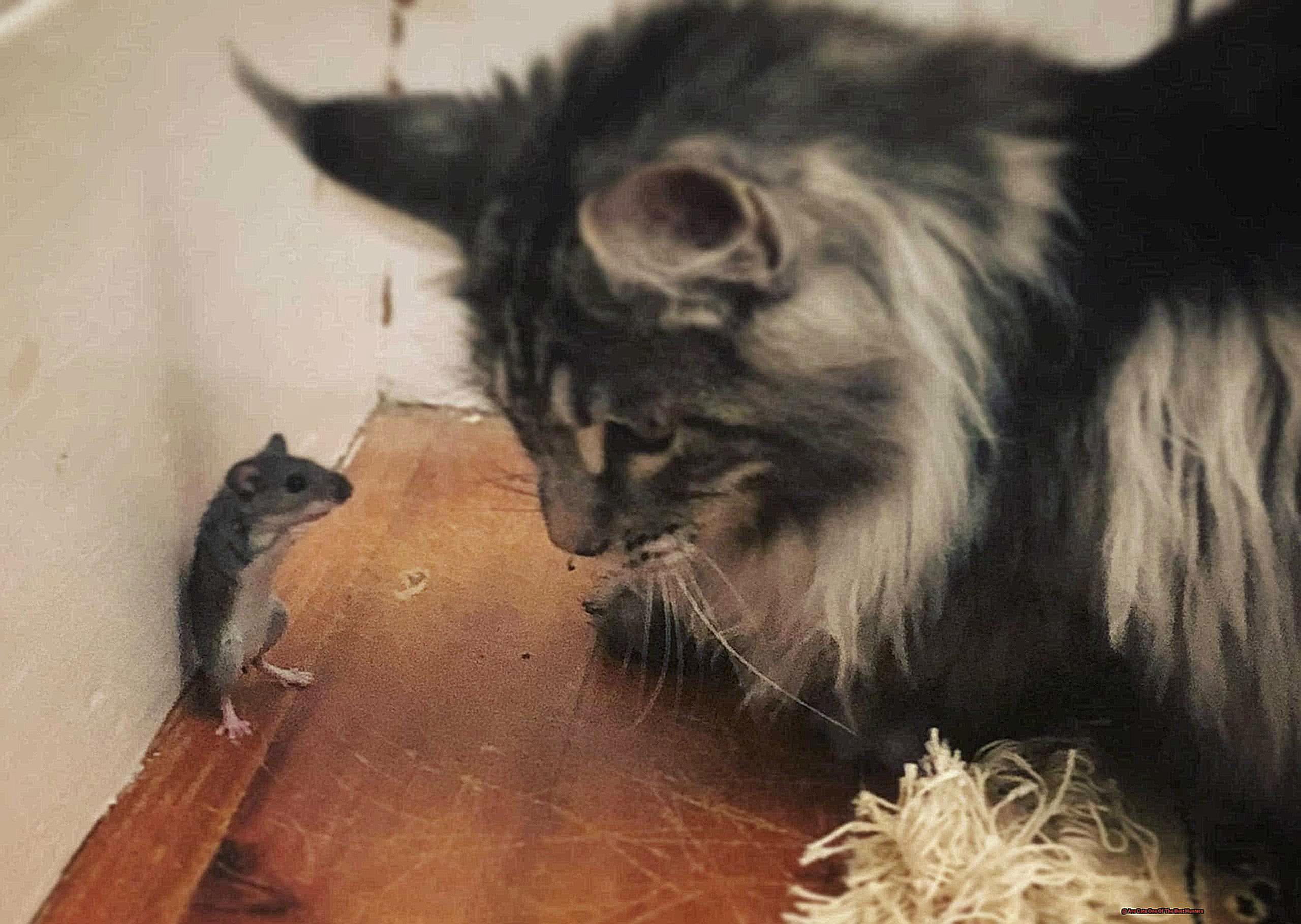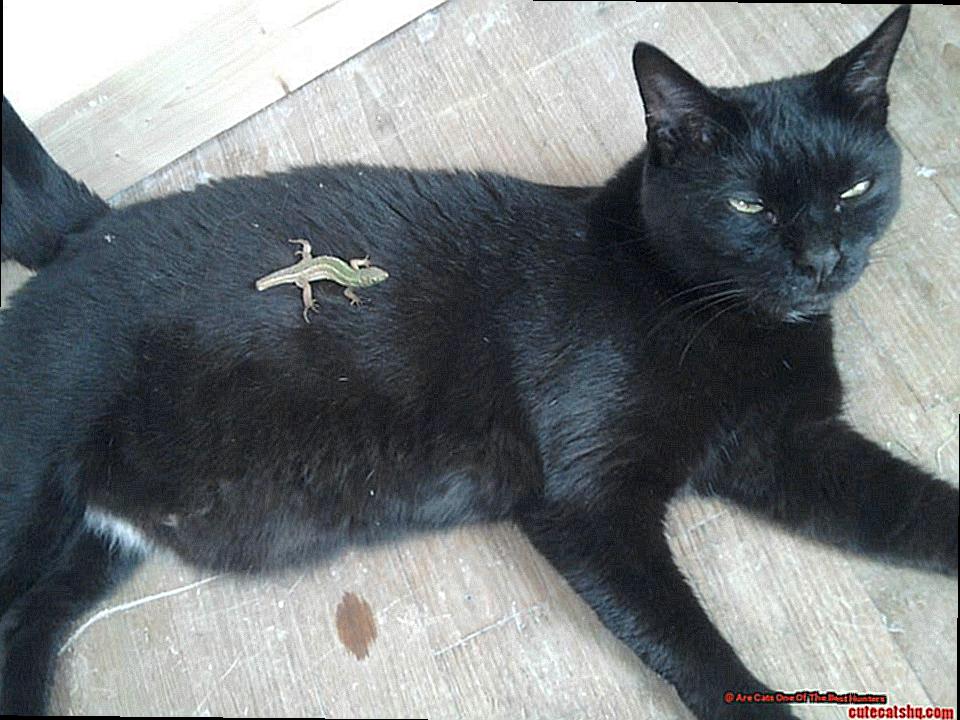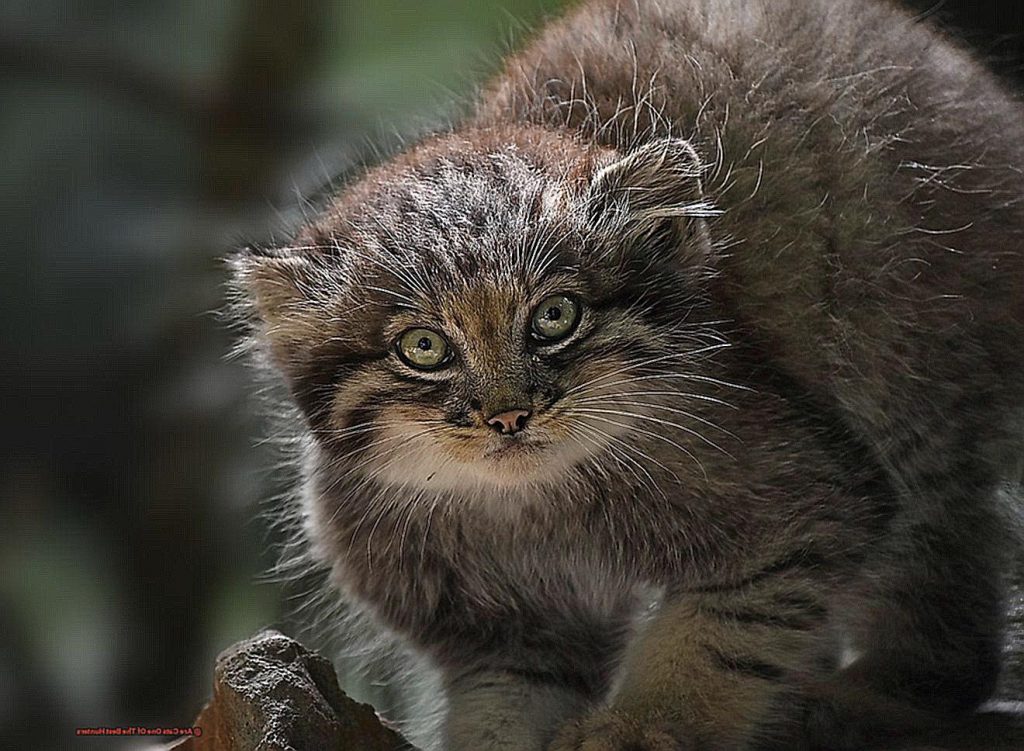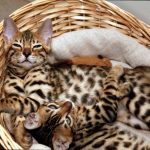Today, we’re diving into the captivating world of feline hunting abilities. We all adore our fluffy companions for their cuddles and purrs, but did you know that they also possess impressive hunting skills?
Behind those cute faces and playful antics lies a natural-born predator with razor-sharp senses and lightning-fast reflexes. For centuries, cats have been honing their hunting instincts, making them one of the most skilled hunters in the animal kingdom.
Prepare to be amazed by their incredible prowess.
Are Cats One Of The Best Hunters?
Contents
As an expert on all things cats, I’m here to explore their exceptional hunting abilities and uncover why they have earned the title of one of the best hunters in the animal kingdom.
Sharp Senses
Cats may have been domesticated for thousands of years, but their hunting instincts have remained intact. This is due in part to their sharp senses, which have evolved to make them efficient predators. Their eyesight is one of their most impressive assets, with a visual field of 200 degrees, allowing them to see prey from far away. They also have a reflective layer behind their retina called the tapetum lucidum, which enhances their night vision and allows them to see in low light conditions.
But it’s not just their eyes that make them top hunters. Cats also have a keen sense of hearing, with the ability to detect high-frequency sounds that humans cannot hear. This helps them locate prey that may be hidden or out of sight, giving them an advantage in their hunt.
Agile Bodies
Besides their sharp senses, cats also have physical attributes that contribute to their hunting success. Their retractable claws and flexible bodies allow them to silently stalk and pounce on their prey without being detected. These agile movements are crucial for catching and holding onto prey, making cats one of the best climbers in the animal kingdom.
Patience is Key
One of the key factors that make cats such efficient hunters is their patience. They can spend hours waiting for the perfect moment to strike, using their stealth and patience to catch their prey off guard. This waiting game is a crucial part of their hunting technique, ensuring that they only expend energy when they know they have a high chance of success.
The Anatomy of a Cat: How it Contributes to their Hunting Abilities
Cats are not just cute and fluffy companions; they are also fierce predators with impressive hunting skills. From their sharp senses to their powerful body structure, every aspect of a cat’s anatomy is perfectly designed for hunting. Let’s take a closer look at how their anatomy contributes to their hunting abilities.
Eyesight:
Cats are known for their keen eyesight, which is six times more sensitive to light than ours. This allows them to see well in low light conditions, making them excellent nocturnal hunters. Their pupils are also designed for hunting, able to dilate and contract quickly to adjust to different light levels and environments. This gives them better depth perception and the ability to judge distances accurately, making it easier for them to pounce on their prey.
Flexibility and Agility:
Have you ever seen a cat jump effortlessly from one place to another? Their flexible spine and powerful hind legs give them the ability to leap and climb with ease. This allows them to reach high places and take down prey from above, giving them an advantage over their prey.
Retractable Claws:
One of the most iconic features of cats is their retractable claws. These claws give them the ability to keep them sharp and hidden when they don’t need them, and then swiftly extend them when they need to catch prey or defend themselves. This makes them versatile hunters, able to use their claws as weapons or tools when necessary.
Sensitive Paws:
Cats’ paws are equipped with sensitive pads that help them navigate their surroundings silently, making them stealthy hunters. These pads also act as shock absorbers, allowing cats to move swiftly and quietly while stalking their prey.
Whiskers:
Did you know that cats’ whiskers are not just for show? These long hairs act as sensors, helping cats detect even the slightest movements and changes in the environment. This gives them an edge in hunting, as they can anticipate their prey’s movements and plan their attack accordingly.
Sharp Teeth:
Cats’ sharp teeth, especially their canine teeth, are designed for tearing meat and holding onto prey. This is why they have a powerful bite that can easily take down small animals. Their teeth also play a role in grooming and maintaining their fur, which helps them blend into their environment while hunting.
The Techniques Used by Cats in Hunting Prey
Cats have often been portrayed as lazy and pampered pets who spend their days lounging around the house. But anyone who has ever owned a cat knows that this couldn’t be further from the truth. In fact, cats are natural-born hunters with impressive techniques that make them some of the most proficient predators in the animal kingdom.
So what exactly are these techniques, and how do cats use them to catch their prey? Let’s take a closer look at some of the fascinating hunting skills possessed by our feline friends.
Stalking and Pouncing
If you’ve ever watched a cat in action, you’ll know that they are masters of stealth. Cats have the ability to stalk their prey silently, using their powerful hind legs to pounce with lightning speed. This technique is essential for hunting small and fast-moving animals such as mice or birds.
Agility and Flexibility
Have you ever seen a cat squeeze through a tiny gap or leap onto high surfaces effortlessly? These are just some examples of a cat’s incredible agility and flexibility. Their flexible spine and strong muscles allow them to navigate through any terrain, making it easier for them to catch prey.
Silent Predators
Cats are known for their silent movements, which is a crucial skill when it comes to hunting. By staying quiet, they can sneak up on their prey without being detected, increasing their chances of a successful catch.
Keen Senses
A cat’s senses are highly acute, making them excellent predators. Their eyesight is superior to humans, allowing them to spot prey from great distances. They also have excellent hearing, which helps them locate prey even in the dark.
Strategic Thinking and Patience
Contrary to popular belief, cats are not impulsive hunters. In fact, they are quite strategic in their approach. They will often wait for the perfect moment to strike, conserving their energy and ensuring a successful catch. This also requires patience, another important skill for a successful hunt.
Sharp Claws and Teeth
Cats have sharp claws and teeth that are essential tools in their hunting arsenal. These not only help them grasp and hold onto their prey but also inflict fatal injuries, making it easier for them to make a kill.
The Importance of Hearing and Vision in a Cat’s Hunting Skills
Cats are natural-born hunters, and their impressive hunting skills have been honed over thousands of years of evolution. One of the key factors that contribute to a cat’s successful hunting abilities is their keen sense of hearing and vision. In this section, we will explore why these senses are crucial for a cat’s hunting skills and how we can help our feline friends maintain them.
Hearing – A Powerful Tool for Hunting:
A cat’s hearing is four times stronger than the average human’s. It means they can detect high-frequency sounds that we cannot even hear. This ability is vital for a cat’s hunting success, as it allows them to pick up the slightest noises made by their prey, such as rustling leaves or the scurrying of small animals.
A cat’s ears are also designed to swivel independently, allowing them to pinpoint the source of a sound accurately. This remarkable feature enables cats to determine the distance and direction of their prey, making it easier for them to plan their stealthy attack.
Vision – The Eyes of a Hunter:
Cats have excellent vision, thanks to their large pupils that can dilate widely to let in more light. This ability allows them to see clearly even in low light conditions, giving them an advantage over their prey during dawn or dusk hunts.
Additionally, cats have a wider field of view than humans, allowing them to see up to 285 degrees compared to our 180 degrees. This enhanced peripheral vision helps cats spot prey from different angles and makes it challenging for their prey to escape.
The Role of These Senses in Hunting:
A cat’s heightened senses of hearing and vision play a crucial role in making them efficient hunters. These abilities allow them to detect and track prey from a distance, making it easier for them to plan their attack. Cats’ stealthy movements, lightning-fast pounces, and strategic thinking are all made possible by their keen senses.
Caring for Your Cat’s Senses:
As responsible pet owners, it is essential to monitor our cats’ health and take care of their senses. Regular vet check-ups can help detect any issues that may affect a cat’s hearing or vision, such as ear infections or deteriorating eyesight. Prompt treatment can help maintain these senses and ensure your cat can continue using them for hunting and play.
Efficiency and Adaptability: Why Cats are Successful Hunters
Cats are known for their impressive hunting abilities, and it’s no secret that their success as predators is rooted in their natural instincts. But what exactly makes them such efficient hunters? Let’s dive into the secrets behind cats’ remarkable hunting skills.
It all starts with their innate hunting instinct. This instinct has been honed over thousands of years of evolution, making cats some of the most skilled hunters in the animal kingdom. It’s what drives them to stalk, pounce, and catch their prey with precision and agility.
But it’s not just their instincts that make them successful. Cats also have a unique anatomy that plays a crucial role in their hunting abilities. Their flexible spine and powerful hind legs allow them to move with speed and agility, making it easier for them to catch fast-moving prey. And let’s not forget their retractable claws, which give them an advantage over other predators by allowing them to grip onto their targets.
Cats also have exceptional senses that aid in their hunting endeavors. Their acute vision and excellent hearing make it easier for them to detect prey from a distance. This allows them to strategize and plan their attacks, increasing their chances of a successful hunt.
One of the most fascinating things about cats is their adaptability as hunters. They can thrive in a variety of environments, from grasslands to forests to urban settings. This adaptability allows them to take advantage of different food sources and use various hunting techniques.
Unlike many other predators, cats do not rely on strength or size to catch their prey. Instead, they use their intelligence and patience to outsmart their targets. They are skilled at using camouflage and stealth tactics when stalking their prey, making it difficult for their target to escape.
But it’s not just their physical abilities that make them efficient hunters; cats also have excellent reflexes and quick reaction times. These attributes allow them to make split-second decisions while hunting, increasing their success rate.

Finally, cats have a highly developed sense of timing and coordination, which is crucial when it comes to capturing fast-moving prey. Their precision and accuracy in their movements make them one of the best hunters in the animal kingdom.
As cat owners, it’s essential to understand and appreciate our feline friends’ hunting abilities. We can help support their natural instincts and physical capabilities by providing them with a healthy diet and regular exercise. We should also take care of their senses by scheduling regular check-ups with our veterinarian and keeping them safe from harmful substances.
From Small Prey to Larger Targets: What Can Cats Hunt?
The world of feline hunting is a fascinating one, filled with natural instincts and physical abilities that make cats such efficient predators. From their sharp claws and teeth to their flexible bodies and keen senses, these animals are designed for stalking and capturing prey. But have you ever wondered exactly what cats can hunt?
It may surprise you to learn that cats are capable of hunting a wide range of creatures, from the smallest insects to larger animals like birds and even rabbits. This is because they are natural predators, with thousands of years of evolution behind their efficient hunting abilities.
One of the reasons cats are such successful hunters is their sharp claws and teeth. These tools are designed for catching and killing prey, making it easy for them to take down even larger animals. Additionally, cats have incredibly flexible bodies that allow them to move quickly and silently through their environment, making them expert stalkers.

But it’s not just their physical abilities that make cats such efficient hunters. They also have exceptional senses, including sight, hearing, and smell. Their eyesight is particularly well-suited for hunting, with a wide field of vision and the ability to see in low light conditions. Their hearing is also highly attuned, allowing them to detect even the slightest movements of potential prey.
While domesticated cats may not have the same opportunities to hunt as their wild counterparts, they still retain their innate hunting instincts. Even indoor cats will often display hunting behaviors such as stalking, pouncing, and playing with toys as a way to fulfill their natural instincts.
So what exactly do cats hunt? The answer is anything they can get their paws on. Cats are opportunistic hunters, meaning they will go after whatever prey is available in their environment. This can include a wide range of creatures such as mice, rats, insects, lizards, birds, and even small mammals like squirrels or rabbits. In rural areas, cats may even go after larger prey like snakes or small deer.
Indoor vs Outdoor Cats: How Environment Affects Hunting Behaviors
Their sharp claws and teeth, flexible bodies, and keen senses make them skilled predators capable of capturing a wide range of prey. But have you ever wondered how their environment affects their hunting behaviors?
Indoor cats may not have the same opportunities to hunt as outdoor cats, but that doesn’t mean they don’t exhibit their natural instincts. Let’s take a look at how the environment plays a role in a cat’s hunting behaviors.
Sense of Sight vs Smell and Hearing
One major difference between indoor and outdoor cats is their use of senses when hunting. Outdoor cats have the advantage of using their sight to track and capture prey. They can spot a bird or rodent from a distance and use their stealthy stalking skills to make the catch.
On the other hand, indoor cats may rely more on their sense of smell and hearing to hunt. They may not have the same opportunities to use their sight, but they can still exhibit impressive hunting skills through play and instinctual behaviors.
Variety of Prey
The environment also plays a role in the type of prey that cats hunt. Outdoor cats have a wider variety of prey available to them, such as rodents, birds, and insects. This variety allows them to practice different hunting techniques and keeps them mentally stimulated.
In contrast, indoor cats may only have access to toys or house flies for hunting. While they may not have as many opportunities to practice their hunting skills, they can still exhibit impressive behavior when given the chance.
Success Rate in Hunting
Studies have shown that outdoor cats tend to have a higher success rate in catching prey compared to indoor cats. This is due to their ability to use all of their senses and the variety of prey available in their environment.
However, this does not mean that indoor cats are not skilled hunters. They may not have the same opportunities as outdoor cats, but they can still exhibit impressive hunting skills when given the chance.
Different Hunting Techniques
The environment also influences the type of hunting techniques that cats develop. Outdoor cats may have learned to climb trees, stalk and pounce on prey, or even hunt in groups. In contrast, indoor cats may develop different techniques due to their limited environment.
Conclusion
In summary, cats possess an innate ability for hunting that is truly remarkable. As we have delved into in this article, their keen senses, agile bodies, and strategic thinking all contribute to their success as predators. From their sharp eyesight and sensitive paws to their retractable claws and flexible spines, every aspect of a cat’s anatomy is perfectly crafted for the hunt.
Moreover, cats are highly adaptable creatures who can thrive in various environments and utilize different techniques to catch their prey. Whether they are stealthily stalking small insects or taking down larger animals like birds or rabbits, cats are skilled at utilizing their physical abilities and instincts to make successful kills.
While outdoor cats may have more opportunities to hone their hunting skills, indoor cats also exhibit impressive behaviors when given the chance. As responsible cat owners, it is important for us to understand and appreciate our feline friends’ natural instincts and provide them with outlets for these behaviors such as interactive toys or playtime.






